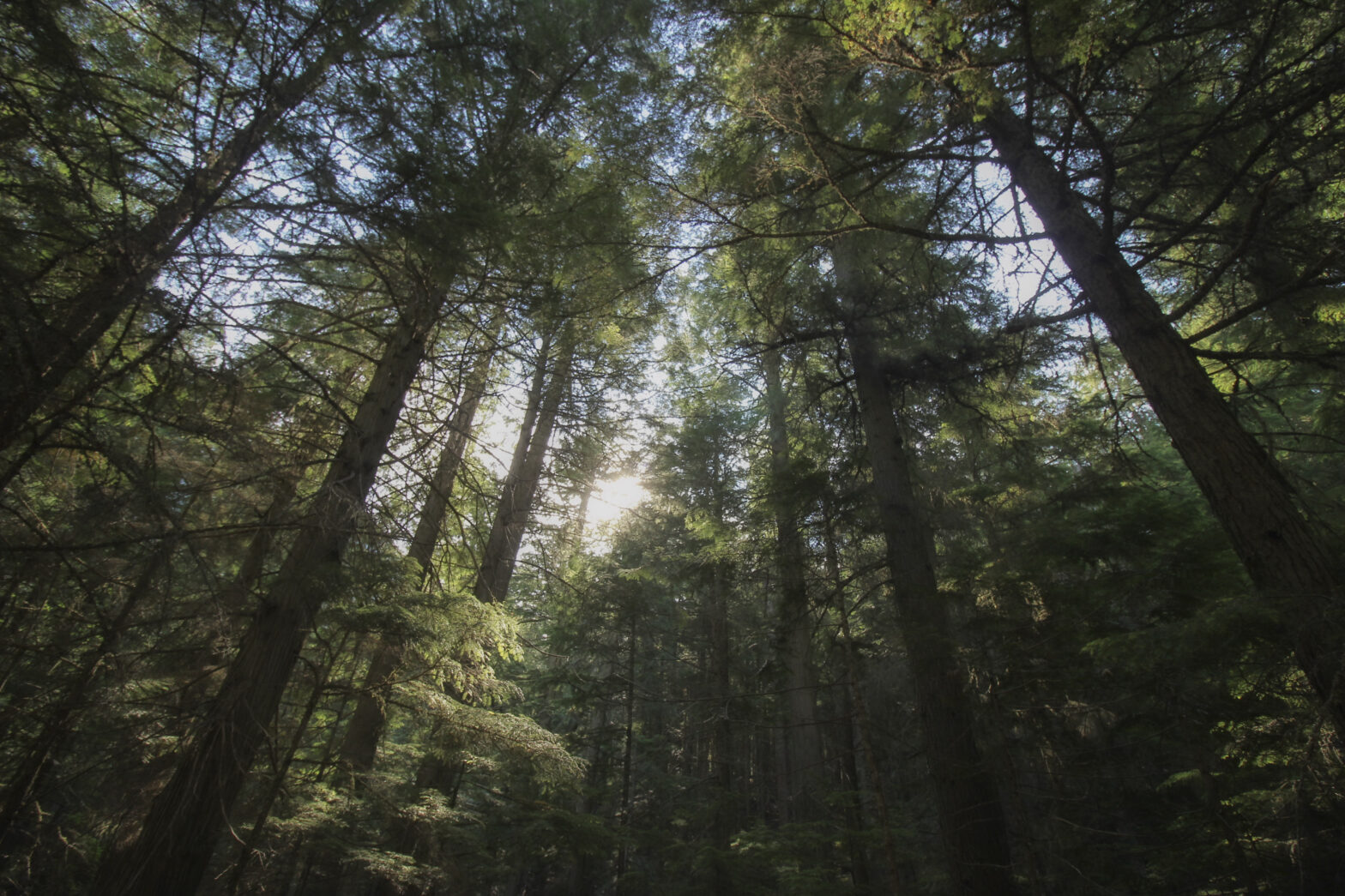When the YouTube videos said that Glacier National Park was teeming with some of the greatest biodiversity in the United States, the videos were not lying. The previous night, we had stayed in the northeast corner of the park. That area had been referred to as a “desert”, but clearly it was just like the other steppe-land of the High Plains. We were no more than a couple of dozen miles away at Avalanche Creek. Here on the west side of the continental divide, Glacier is a literal rain (snow?) forest. The name of the trail printed on the sign that Elizabeth was waiting next to while I used the bathroom at the trailhead made sense. The Trail of the Cedars is incredibly accessible – it’s only a mile or so to complete the loop from the trailhead to the far side of the trail and back. Most of it is laid out on a boardwalk – like I said, accessible. And most of it is sheltered in a green, leafy expanse beneath some truly giant cedar trees. These cedar trees, down in the lower Avalanche Creek valley, paint the farthest eastern extent of the Pacific Northwest ecosystem. They’ve been growing for 500 years. And they inspire more than a little bit of awe when you walk through them, staring up through the soft green light that filters through the needles. The trunks are indeed thick (TM) and red, like you’d expect a cedar to be.

Elizabeth took the lead while I kept my head in the figurative clouds. Or trees. We had definitely found the crowds – figures that while the east side of the park was inaccessible due to the closure of Logan Pass, everyone was crowded in here. And the accessibility of the Trail of the Cedars meant that families with little kids as well as the Worst People Inside National Parks were all here. Well, not everything was gonna be serene the whole time. I just hoped that enough of them were only doing the short loop to the Avalanche Creek Canyon and not continuing on the out-and-back trail that added 4 more miles up to Avalanche Lake. Elizabeth and I would be doing that. But first, we had to head out to the canyon, which I’d seen in passing while researching the park. This was one of the many, many gems that make Glacier what it is.
At least going in, I had assumed that the canyon would be the “show-stopper” as far as this part of the trail went. But in learning that this was sort of the end reach of the giant northwestern trees, I think my mind got absorbed in enjoying the massive cedars. When you’re on a 1-mile loop trail, that means you can reach your destination before you even realize it. And so it was that Elizabeth and I were walking along, and I was thinking of arboreal matters in my oh-so-expert way, when all of a sudden I looked ahead and there was a bridge over a roaring Avalanche Creek. Any question of whether this was “the spot” was dispelled when I saw that above the bridge, the creek narrowed into a roaring gorge. The color contrast was gorgeous – Avalanche Creek was a foaming froth of whitewater that was somehow still tinged the same shade of blue that all bodies of water are inside Glacier. The walls of the canyon were that purple-ish grey that I’d seen in rocks all over the park. And a brilliant green moss grew on those. It was particularly captivating. I wish I had spent more time framing up my shot, but I also wish I had spent more time just staring at this unique little canyon. So maybe I just wish I’m a park ranger inside Glacier so I can visit stuff like this all the time. That would solve it. In lieu of that, maybe the Amish group right alongside us on the bridge could have crowded us out a little less. That would also have helped.
You’ll just have to settle for this (admittedly somewhat subpar) picture.

It was still a very cool thing to see, picture or no picture. That annoyance you get from me in this post is a byproduct of Nolan months in the future editing the picture unsuccessfully. At the time I gripped it and ripped it with my Canon, and then stared in wonder at the sheer volume of water Avalanche Creek was sending downstream through such a narrow gorge.
Although the post ends here, we didn’t consider what we were doing to be two separate things. Instead, Elizabeth continued to lead the way to the breakoff point where the Avalanche Lake trail begins to head up the moderate grade along which the creek tumbles. We’ll pick up there in the next post, following along with this most glorious of mornings.
